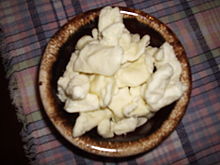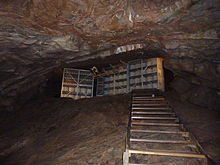User:Glaisher/lsth
Neurologically intact individuals appear to be born musical. Even before they are able to talk, infants show remarkable musical abilities that are similar to those of adults in that they are sensitive to musical scales and a regular tempo.[1] Also, infants are able to differentiate between consonant and dissonant intervals. These perceptual skills indicate that music-specific predispositions exist.[1]
Prolonged exposure to music develops and refines these skills. Extensive musical training does not seem to be necessary in the processing of chords and keys.[1] The development of musical competence most likely depends on the encoding of pitch along musical scales and maintaining a regular pulse, both of which are key components in the structure of music and aid in perception, memory, and performance.[1] Also, the encoding of pitch and temporal regularity are both likely to be specialized for music processing.[1] Pitch perception is absolutely crucial to processing music. The use of scales and the organization of scale tones around a central tone (called the tonic) assign particular importance to notes in the scale and cause non-scale notes to sound out of place. This enables the listener to ascertain when a wrong note is played. However, in individuals with amusia, this ability is either compromised or lost entirely.[1]
Music-specific neural networks exist in the brain for a variety of music-related tasks. It has been shown that Broca's area is involved in the processing of musical syntax.[2] Furthermore, brain damage can disrupt an individual's ability to tell the difference between tonal and atonal music and detect the presence of wrong notes, but can preserve the individual's ability to assess the distance between pitches and the direction of the pitch.[1] The opposite scenario can also occur, in which the individual loses pitch discrimination capabilities, but can sense and appreciate the tonal context of the work. Distinct neural networks also exist for music memories, singing, and music recognition. Neural networks for music recognition are particularly intriguing. A patient can undergo brain damage that renders him/her unable to recognize familiar melodies that are presented without words. However, the patient maintains the ability to recognize spoken lyrics or words, familiar voices, and environmental sounds.[1] The reverse case is also possible, in which the patient cannot recognize spoken words, but can still recognize familiar melodies. These situations overturn previous claims that speech recognition and music recognition share a single processing system.[1] Instead, it is clear that there are at least two distinct processing modules: one for speech and one for music.[1]

The curds and whey are separated using rennet, an enzyme complex normally produced from the stomachs of newborn calves (in vegetarian or kosher cheeses, bacterial-, yeast- or mould-derived chymosin is used).[3][4]
Cheddaring refers to an additional step in the production of cheddar cheese where, after heating, the curd is kneaded with salt, cut into cubes to drain the whey and then stacked and turned.[3] Strong, extra-mature cheddar, sometimes called vintage, needs to be matured for up to 15 months. The cheese is kept at a constant temperature often requiring special facilities. As with other hard cheese varieties produced worldwide, caves provide an ideal environment for maturing cheese; still, today, some cheddar cheese is matured in the caves at Wookey Hole and Cheddar Gorge. Additionally, some versions of cheddar cheese are smoked.[5][6]

Character
[edit]
The ideal quality of the original Somerset cheddar was described by Joseph Harding in 1864 as "close and firm in texture, yet mellow in character or quality; it is rich with a tendency to melt in the mouth, the flavour full and fine, approaching to that of a hazelnut".[7]
Cheddar made in the classical way tends to have a sharp, pungent flavour, often slightly earthy. Its texture is firm, with farmhouse traditional cheddar being slightly crumbly; it should also, if mature, contain large cheese crystals consisting of calcium lactate – often precipitated when matured for times longer than six months.[8]
Cheddar is usually a deep to pale yellow (off-white) colour, but food colourings are sometimes used in industrial varieties of cheddar-style cheeses. One commonly used example is annatto, extracted from seeds of the tropical achiote tree. The largest producer of industrial cheddar-style cheese in the United States, Kraft, uses a combination of annatto and oleoresin paprika, an extract of the lipophilic (oily) portion of paprika.[9] Coloured cheddar cheese has long been sold, but even as early as 1860, the real reason for this was unclear: Joseph Harding stated "to the cheese consumers of London who prefer an adulterated food to that which is pure I have to announce an improvement in the annatto with which they compel the cheesemakers to colour the cheese."[10] According to David Feldman, an author of trivia books, "The only reason why cheesemakers colour their product is because consumers seem to prefer it."[9]
Cheddar cheese was sometimes (and still can be found) packaged in black wax, but was more commonly packaged in larded cloth, which was impermeable to contaminants, but still allowed the cheese to "breathe", although this practice is now limited to artisan cheese makers.
The Slow Food Movement has created a Cheddar Presidium,[11] claiming that only three cheeses should be called "original cheddar". Their specifications, which go further than the "West Country Farmhouse Cheddar" Protected Designation of Origin (PDO), require that cheddar cheese be made in Somerset and with traditional methods, such as using raw milk, traditional animal rennet, and a cloth wrapping.[12]
Notable cheddar cheeses include "Quickes", which in 2009 was awarded cheese of the year by the British Cheese Association, "Keen's", with a strong tang, and "Montgomery's", with an apple aftertaste. Lincolnshire Poacher cheese is an example of a cheese made in the style of a traditional cheddar in Lincolnshire.
- ^ a b c d e f g h i j Cite error: Invalid
<ref>tag; no text was provided for refs namedInsights; see Help:Cite errors/Cite error references no text (). - ^ Burkhard Maess, Stefan Koelsch, Thomas C. Gunter and Angela D. Friederici. "Musical syntax is processed in Broca’s area: an MEG study" (2001) Nature Publishing Group.
- ^ a b Mount, Harry (18 June 2005). "Savvy shopper: Cheddar". The Daily Telegraph. London. Retrieved 10 March 2008.
- ^ "Information Sheet – Cheese & Rennet". Vegetarian Society. Retrieved 10 March 2008.
- ^ American Cheeses: The Best Regional, Artisan, and Farmhouse Cheeses, Who ... – Clark Wolf
- ^ Kelly Jaggers, Moufflet: More Than 100 Gourmet Muffin Recipes That Rise to Any Occasion, p. 104.
- ^ Transactions of the New-York State Agricultural Society for the Year 1864, page 232, volume 14 1865, Albany
- ^ Template:Cite thesis
- ^ a b Feldman, David (1989). When Do Fish Sleep? And Other Imponderables of Everyday Life. Harper & Row, Publishers, Inc. p. 15. ISBN 0-06-016161-2.
- ^ Murray, John (1860). "Recent Improvements in Dairy Practice". Journal of the Royal Agricultural Society of England. 21. London: 90.
- ^ Blulab sas. "La Fondazione – slow food per la biodiversità – ONLUS". Slowfoodfoundation.org. Retrieved 23 June 2009.
- ^ "Presidia Artisan Somerset Cheddar". The Slow Food Foundation. Retrieved 9 May 2007.
